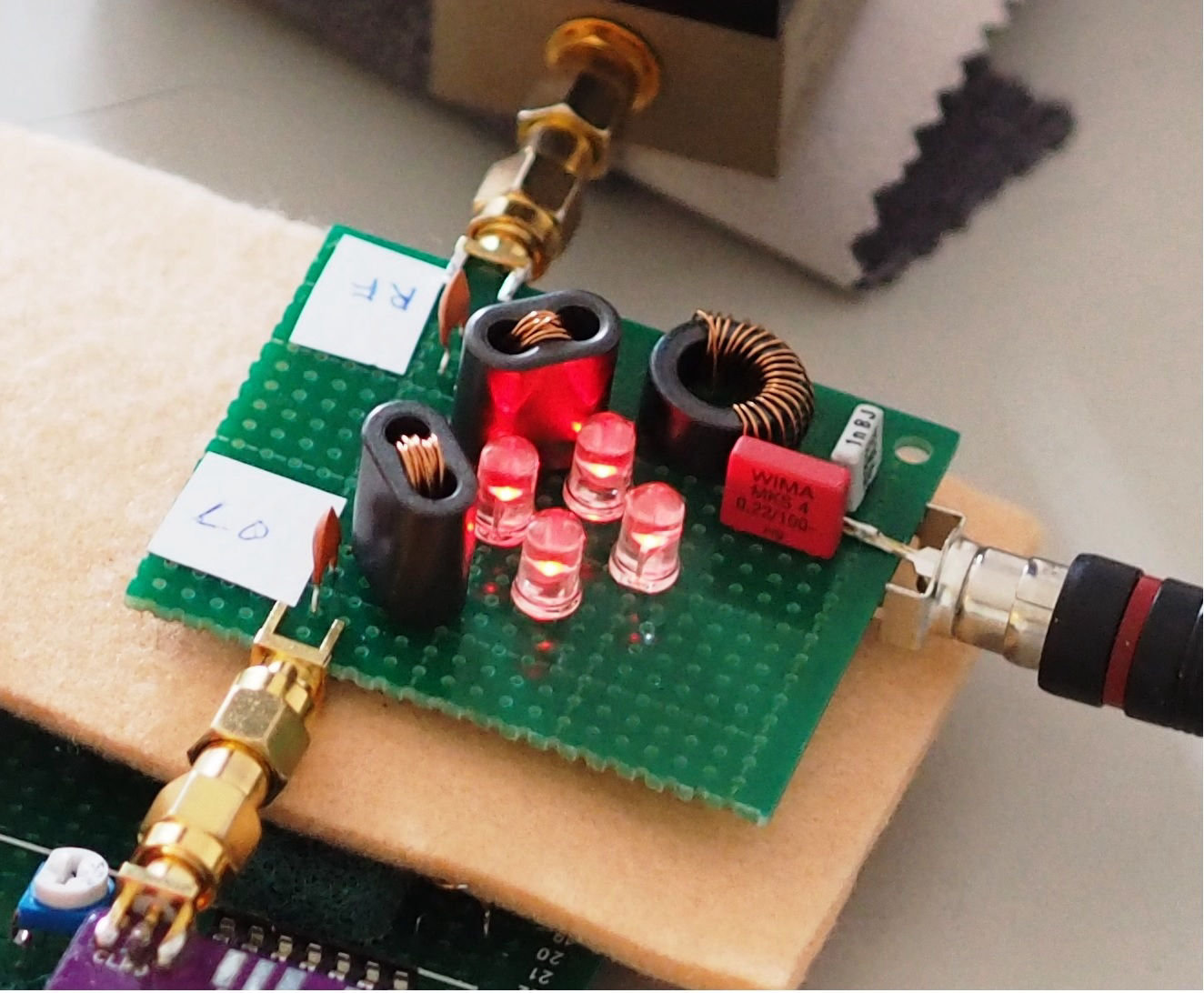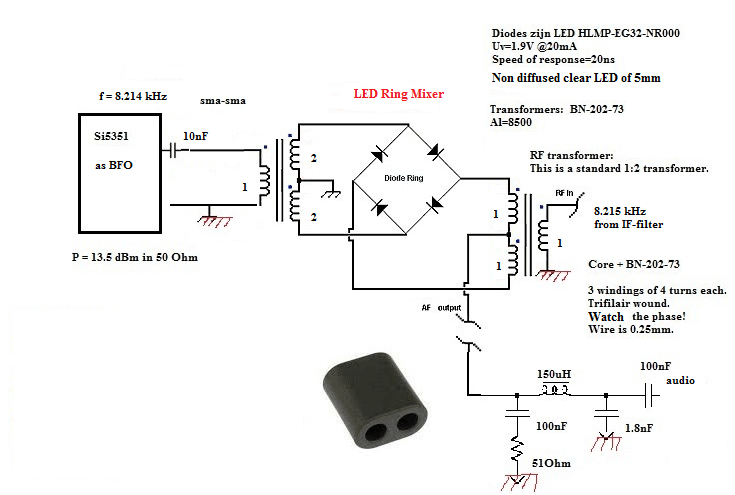About the transformers: i used this time a multi aperture core, for a change. The BN-73-202, as it is widely available. Zi should be 5-10 times the imput impedance, so about 250-500 Ohm. I used 4 turns on the primairy side, and 2 times 8 turns on the secondary side. In this case, you can use this transformer also at 455 kHz as if, without changing anything. I used wire of 0.25mm, that is a nice size for this job. Not too thick that it doesn't do the number of turns, not too thin that it is uneasy to handle.
If you want you can also use the FT50-43, use the same number of turns for a frequency of 8-9 MHz, the standard if frequencies.
I first wound both secondary windings, and not bifilar, as it's simply uneasy. I took the middle of the wire and wound one turn clockwise for one winding, and the other end anti-clock wise one turn for the other winding. And so on, until you have 2 x 8 turns for both windings. Then the phase will automatically be correct. When you loose count for one winding, you see it directly as the ends of both wires have unequal length.
On top of the secondary winding you put the primairy of 4 turns, and you are done.
You can directly connect to the Si5351 output using a blocking capacitor, i used 10nF for 8 MHz, use a somewhat bigger value for a lower frequency.
You can check directly if you want that is works, by connecting the 4 LEDs to the l.o. transformer. When you switch on the BFO, the LEDs should go on and lighten evenly.
The transformer for the IF side, i used the same BN-73-202, and wound it with 3 windings of 4 turns, trifilar. Maybe i should have used the same windings as for the l.o. transformer. This is something for further investigation.


